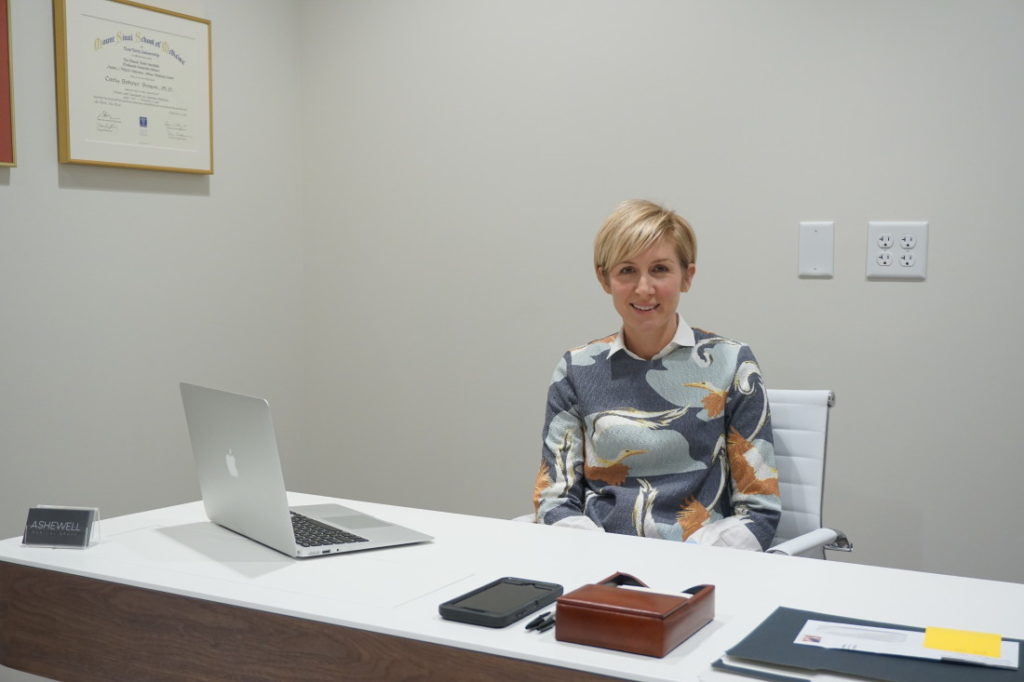Note, this piece written for Mountain Xpress April 20, 2017 by Nick Wilson
In the midst of what’s arguably the loudest, most contentious public debate over affordable health care in the U.S., there’s a more understated movement building steam across the country and here in Asheville — led not by politicians or lawmakers but by physicians who insist on providing more effective health care.
Enter the concept of “direct primary care,” or “direct care,” a new model promoted by primary care physicians who want to break free from the current insurance-based system. The approach aims to remove red tape and streamline the medical experience by cutting insurance completely out of the equation. Rather than getting paid by patients’ insurance, direct care doctors are instead paid directly by patients through monthly memberships with flat fees.

“There’s a lot of interest in direct care amongst primary care doctors,” says Dr. Chad Krisel, co-founder of Integrative Family Medicine of Asheville, the first direct primary care facility in Asheville and one of the first 10 direct primary care facilities to open in the country. “Many primary care docs are finding
themselves either in an insolvent business that they’re trying to find a way out of, or they’re finding themselves drowning in paperwork
working for a big medical system that’s demanding they see four or five patients an hour.
“When a doctor takes on insurance,” says Krisel, “they’re taking on an incredible amount of overhead in order to interact with that insurance.” He points to a 2011 study published in the journal Health Affairs, which found that the costs of dealing with health insurance companies on payment issues in the U.S. averaged around $83,000 per physician per year.
“So we have five physicians [at Integrative Family Medicine] — multiply five by $83,000 and that’s greater than $400,000 before even paying an electricity bill,” Krisel continues. “What that ends up translating into, in order to make up for that overhead [is that] a full-time doctor in a typical insurance-based medical practice often does have to see up to four or five patients an hour, and each doc usually takes on a standard of 2,500 patients on their panel. It ends up being that you can’t book an appointment for three months.
“And so in a DPC practice, right off the top, we’re eliminating that $83,000 per physician per year in extra overhead,” he says. “So instead of a full- time doctor taking on 2,500 patients, depending on the specific DPC practice, docs are taking on somewhere between 500 to 1,000 patients instead. Because we have such a lower volume, we’re able to spend much more time with our patients, and they have a much greater likelihood of being seen when they need to be seen.”
Kriesel also mentions, “A recent study showed that 45 percent of primary care docs, if they had the means to, would retire. The current system has taken a profession that historically has been one of the most rewarding jobs and turned it into one of the least desirable professions.”
A survey by the Physicians Foundation (as reported by the Heritage Foundation) found that “most doctors are profoundly dissatisfied and believe that their profession is in decline. Among the ‘very important’ reasons they give for the decline are too much regulation and paperwork (79.2 percent), loss of clinical autonomy (64.5 percent), lack of compensation for quality (58.6 percent) and erosion of physician-patient relationship (54.4 percent).”
A reason to be optimistic
“When you unleash the chains of catering to third-party administrators,” says Krisel, “every second freed up is more time you can spend with the patient. In the end, it’s just a really heartfelt feeling when we can walk into the room and know that our energy, time and resources can be 100 percent dedicated to the patient, and we don’t have to be sidetracked about anything other than what ultimately affects the patient’s health, which is what this is all about.”
John Stevenson, a 63-year-old Asheville resident and Integrative Family Medicine patient, says, “I’ve never had this kind of relationship with any other doctor.The fact that I can just call Chad directly and have so much more time to spend with him during appointments is really appealing. I
feel like he knows me and can address my particular concerns in a much better way than someone who might see twice as many people in a day. The additional time helps build a much greater bond with someone.”
Dr. Carly Brown, who recently opened Ashewell Medical Group, a DPC facility in the River Arts District, underscores the benefits of the DPC model: “I ultimately opened my own DPC practice because I always knew there was a way to do things better. … It was such a no-brainer. I was thinking, ‘I’m going to give people an affordable price per month; I’m going to be able to see 500 patients instead of 3,000; and I’m going to be able
to offer them wholesale meds, labs and imaging.’” She notes, for example, Lexapro, an antidepressant, might cost around $400 for a three-month prescription on the open market, but “I can get 90 days worth for $6. … I just sent somebody out with an antibiotic and high blood pressure medication for 30 days at $1.74.”
Dollars go farther
The DPC monthly fee structures vary from practice to practice, but generally patients pay $120 per month or less for much greater access to doctors. Ashewell, for example, offers a tiered monthly fee structure based on age: 18- to 40-year-olds pay $79 per month, 41 to 64-year olds pay $99 per month, and patients older than 65 pay $119 per month. Integrative Family Medicine offers a lower monthly fee of $59 per month, regardless of age, which includes a yearly physical but costs a flat $20 for each visit.
Included in Ashewell’s monthly fee are free, unlimited visits and same-day or next-day service scheduling. Virtual care is available as well, which allows patients to communicate with Brown via internet, webcam, email and text. “If you have a question, you can text me, you can call me, you can email me. You can Skype me from Thailand, and I will help you. … There’s no questions about that,” says Brown.
Krisel and other DPC doctors maintain health insurance should primarily be used for emergencies. “Insurance in general, if you look at every other insurance product [disability, life, home, auto], functions best to cover against catastrophic events [that] you hope actually never happen,” says Krisel. He recommends that patients purchase catastrophic insurance coverage on top of their DPC membership fees to ensure comprehensive coverage.
“It’s playing with fire if you don’t have some catastrophic coverage,” he emphasizes. “Considering the current state of affairs and how egregiously inflated the cost of medical care is at hospitals, if anything serious were to happen it would be disastrous without insurance. Medical debt is the No. 1 cause of bankruptcy in this country … so it’s just such a gamble not to have it.
“Somewhere along the line, around 1980 or so, health insurance started paying for routine, common and expected events,” he notes. “That’s when we started to see the real degradation of the relationship between the doctor and the patient, straining doctors to five-minute office visits and forcing patients to sometimes wait up to an hour and a half for that five-minute office visit. Five minutes is simply not enough time to effectively do the job.”
But the unfortunate reality is that there simply aren’t many low-premium, high-deductible, catastrophic plans on the market, says Brown. “The only catastrophic plans that are ACA-compliant right now are for people under the age of the 30. There need to be catastrophic plans for all ages, so that patients can opt for DPC as their primary care choice.”
Concierge care
Another health care approach that’s been picking up steam in the country over the past 20 years is “concierge care.” It is similar to DPC in that patients pay a fee (from $80 a month to as high as $25,000 per year) to keep a doctor on retainer. The key difference is that concierge care still functions within the insurance-based model (all visits, procedures, medicines, labs and images go through insurance). But unlike DPC, concierge doctors can remain with their patients when they go to the hospital for more serious events. So for certain types of patients — those who are older, have serious illnesses or simply want to have a seamless health care experience — concierge care can provide the most continuity of medical care.
Dr. Clay Ballantine, founding member of Asheville-based Blue Ridge Premier Medicine, says, “We do our routine office work, we do urgent care type stuff for our patients, we are a part of whenever our patients go through the ER, and we see them every day in the hospital either as their primary doctor or as a medical consultant if they’re having some sort of surgery. So we stick with our patients through all of those different parts of the health care system and provide a greater level of continuity than really anybody else in town can provide … and for some people that’s really what they want. They want the security. When they’re at their sickest, they can look up and see their doctor standing right there with them and not somebody they’ve never met before.
“We’re on call all of the time for our patients,” he adds. “It’s very reassuring for our patients to know that they can easily get ahold of us. They’re not in a position where they have to go knock down the castle doors to get the attention of a busy medical practice.”
The yearly fee for Blue Ridge Premier Medical ranges from $2,000 to $3,000 per year. Ballantine says that a majority of his clients are on the older side — retirees looking to maximize their quality of life, business executives who value their time and can’t afford to sit around in a waiting room, and a geriatric population that wants someone to handle their complex medical issues in a comprehensive, thoughtful way.
The road ahead
Krisel says he’s convinced that DPC is the future of health: “It ends up translating to better health outcomes. The stats are showing that it saves patients money. It saves the docs money, and the outcomes are better. I would even argue it’s a better situation for insurance companies, though I’m not in the insurance industry. I would think they’d make more money [from] their members using insurance less.
“I think the natural evolution of insurance is that it’s going to continue on the trajectory of what insurance is actually meant to do, which is to cover against catastrophes,” says Krisel. “I think we’re going to see less and less of insurance covering routine stuff as part of a cheap insurance plan.”
Whether or not the DPC movement takes hold, serving as a catalyst for the current insurance model to shift to catastrophic coverage, DPC- advocating doctors like Krisel and Brown are moving health care in that direction. For Brown, the impact of DPC is clear: “It’s revolutionizing the system.”
